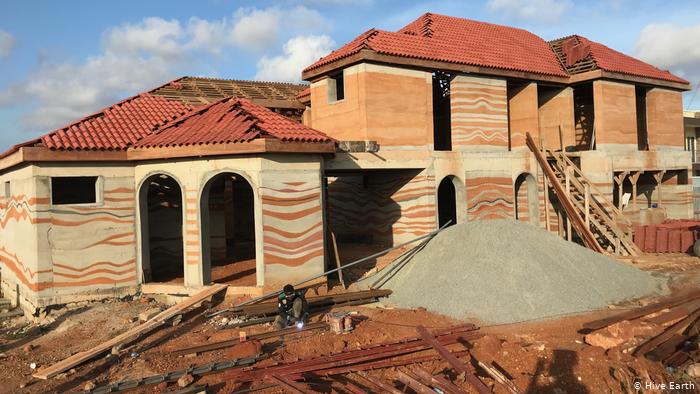Co-founder of Hive Earth Joelle Eyeson; the innovative mind behind new updated mud houses
While measures to address Ghana’s current housing deficit of two million units is still being established, young people are birthing innovative ideas to deal with the challenge.
Co-founder of Hive Earth, Joelle Eyeson, explains the housing challenges in Ghana including whether or not using the traditional ‘rammed earth’ technique would lead the way to affordable eco-housing in the future.
Established in 2016 by Joelle Eyeson and her partner, Hive Earth is an Accra-based construction company.
The company aims at building affordable and eco-friendly houses with locally sourced materials such as clay, laterite and granite chippings which are abundantly available in West Africa.
With her background in property management, she joined forces with her partners, whose expertise in local materials and the local environment greatly aided aids their projects.
READ ALSO: Ghanaian student making laudable strides at Chinese vocational school
Joelle disclosed that currently there is a need for around 2 million new houses in Ghana per year, but most of the building are concentrated in Accra, where land is very expensive.
She revealed that the other issue is that when you build in more rural areas it becomes expensive to travel to the cities for work.
She also said that the team knew that the majority of people in Ghana have a relatively low wage. As a result, they thought it strange to have workers building these big houses that cost hundreds of thousands of dollars they could never afford them.
READ ALSO: Exclusive list: Ghana's Fred Swaniker named in Time Most Influential People of 2019
Her outfit aims at building affordable houses workers especially Ghanaians can afford.
And the prototype that should be ready by the end of the year would cost about $5,000 for a one-room house.

Source: UGC
What exactly is the “rammed earth” technique that you use?
Joelle explains that rammed earth technique is just a mixture of laterite, clay and then granite chippings.
Also, 5 percent cement is used to bind it but sometimes use lime. She says the team wanted a way of building without using cement because it is very toxic, especially in our climate, when combined with the heat and humidity it creates a really bad indoor air quality.
She further disclosed that when they discovered the rammed earth technique they thought it was great because it is basically like the traditional mud house, but updated.
Joelle stressed that it is a tried and tested technique that’s been around for centuries around the world including China, where rammed earth was used to build parts of the Great Wall of China

Source: UGC
In what other ways are the buildings eco-friendly?
In Ghana it is so hot people usually need air conditioning systems in their homes, but these are not always affordable, eco-friendly, or good for your health.
Joelle said Hive Earth teamed up with some German engineers who gave her team the idea of underground cooling systems.
‘‘We dig around 8 feet or more until we get to the cool air underground. Then we use a solar pump which is constantly bringing the cool air into the home. Then it is only the cost of the solar pump (around $300) which people need to pay and there are no bill’’, she emphasized.
READ ALSO: Tamale bakers declare strike over 25 percent flour price increment
Where do you see eco-housing going in the future?
Currently, her outfit is focused on building only individual houses. They would like to be involved in bringing Ghana's eco-housing into bigger housing projects and estates in future
Joelle revealed that the company’s foundation is also planning on doing more workshops with local communities to help transfer to them the skills of building with rammed earth.
‘‘We are also planning on building eco toilets. Ghana has a really bad sanitation problem — only around 19 percent of people in Accra have access to a toilet and in rural areas it’s much worse.’’
She added that ‘‘[they] want to enable people to come and learn about rammed earth, build something that is beautiful, eco-friendly and useful for their own communities.’’
This interview was conducted by Holly Young. The text has been edited and condensed for clarity.
READ ALSO: Ghana’s Ntumi makes double history; wins medal at Africa Seniors Weightlifting Championship
Ghana Nti: Why is the introduction of new uniforms a priority of GES? | #Yencomgh
READ ALSO: Ghanaian student making laudable strides at Chinese vocational school
Want to be featured on YEN.com.gh? Send us a message on our Facebook page with your stories, photos or videos
Source: YEN.com.gh
